We rarely see American Robins near our south Florida home, so they are a welcome sight when we return to Illinois:
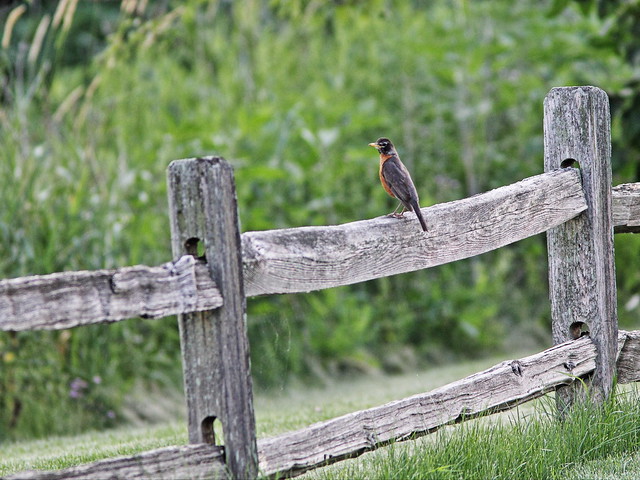
Spring migration is over. Most of the local breeding birds have finished nesting and as July approaches the woodlands fall silent. Now is the time to retreat from the cool shade and visit the prairie, where the calendar appears to have been turned back.
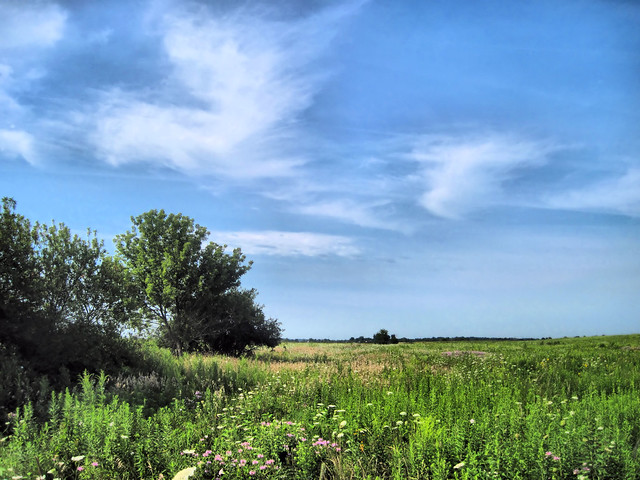
In a sense, the forest is the enemy of the Midwestern prairie. After the last of the glaciers retreated some 14,000 years ago, the bare land progressed from soggy tundra to evergreen woodland. As the climate warmed and dried, hardwoods such as hickory and oak invaded and eventually blanketed the land.
Drought and lightning combined to cause wildfires which produced huge swaths of grassland, and herds of bison helped to keep the prairie open. Prairie plants developed extensive underground roots which resisted destruction from fires and grazing until human settlement turned most of their habitat into rich cropland. Water-filled depressions (potholes) were left behind by the glaciers. These provided places for bison to wallow and waterfowl to find refuge. They often resisted cultivation.
Restored prairie pothole at Nelson Lake Marsh/Dick Young Prairie preserve, near our second home in Kane County, Illinois:
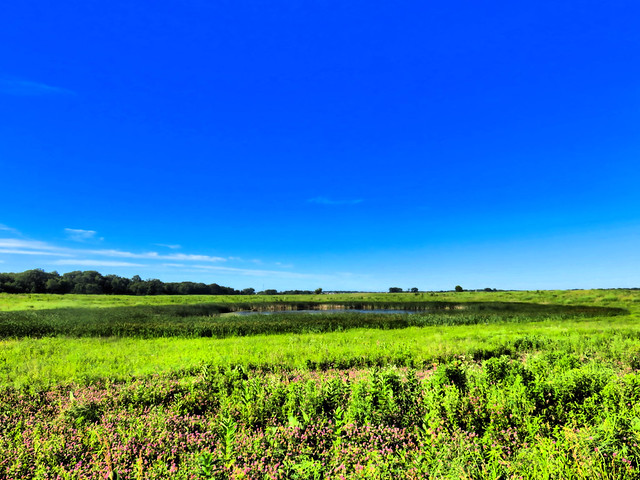
Now the remnants of the prairie require human intervention in order to prosper. The grasslands survive because of controlled burns and selective removal of invasive shrubs, trees and other vegetation, both native and exotic. At Nelson Lake preserve the grass is tall and seed heads are golden, inviting me to render my photo as an oil painting (click on photo for enlarged views):
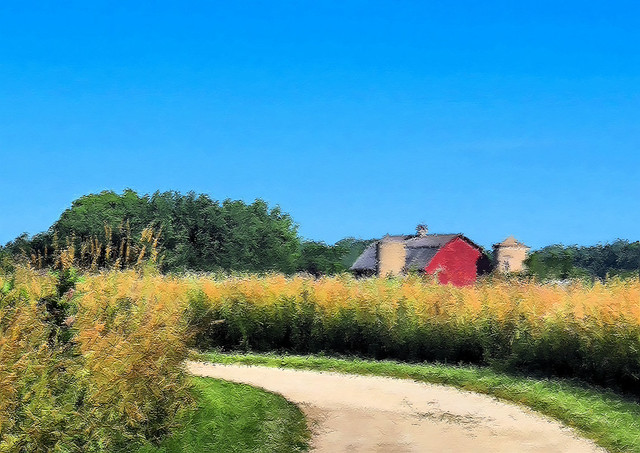
Song Sparrows and Common Yellowthroats have started second and even third broods, and are singing vigorously.
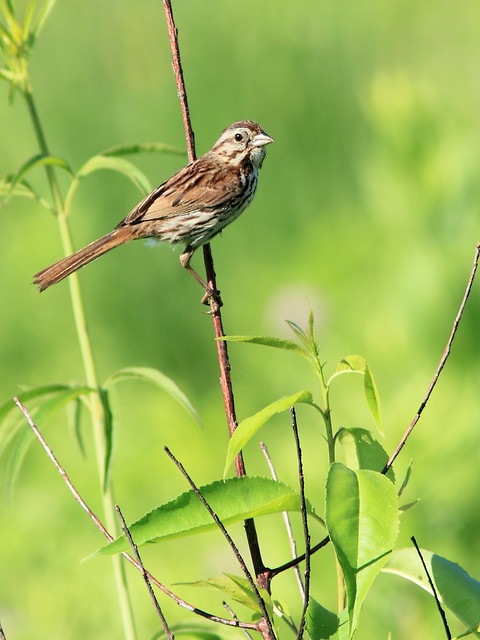
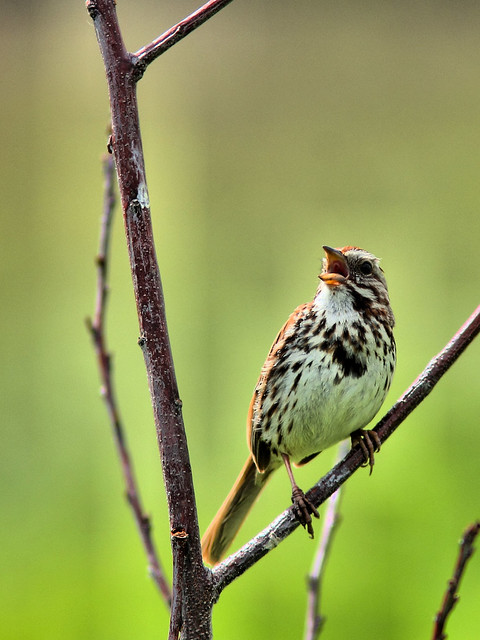
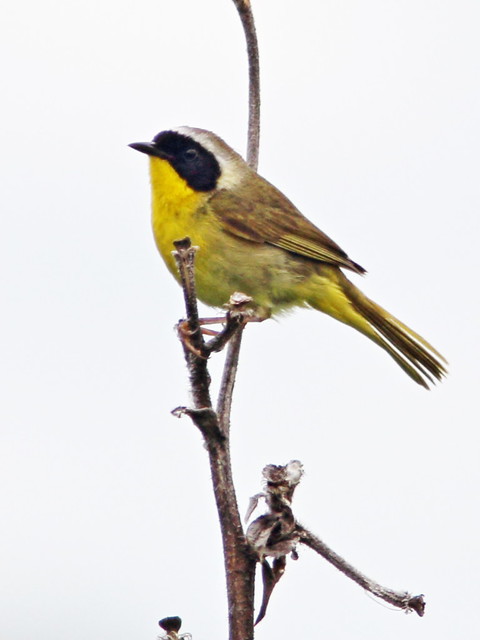
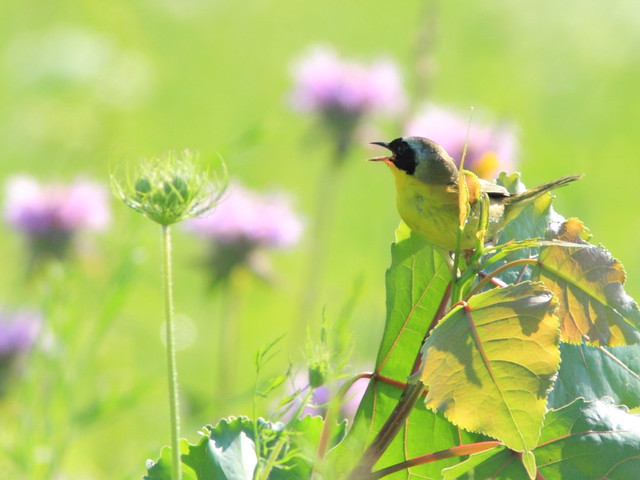
Old fence posts are the tallest roosting places in the grasslands, and a Savannah Sparrow keeps watch from one:
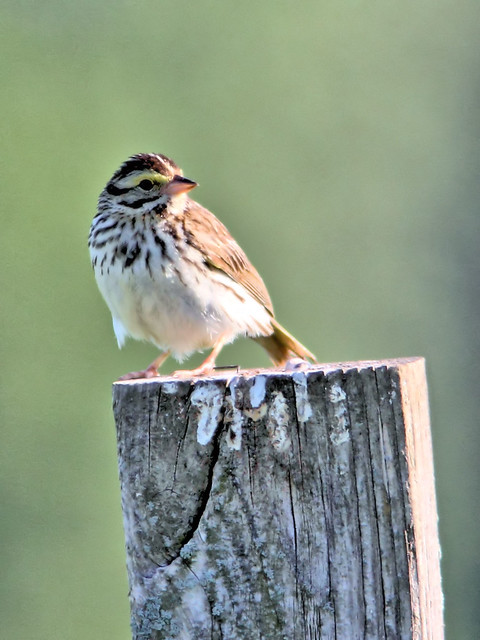
Tiny Henslow's Sparrows are hard to find in the tall grass. Note the greenish tint on its head:
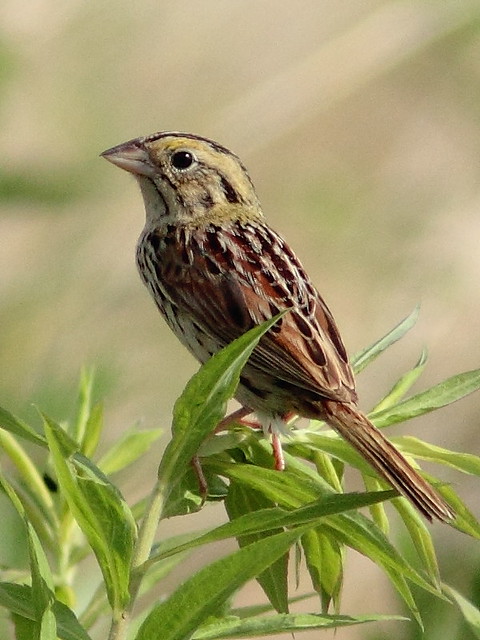
Grasshopper Sparrows prefer areas with shorter grass:
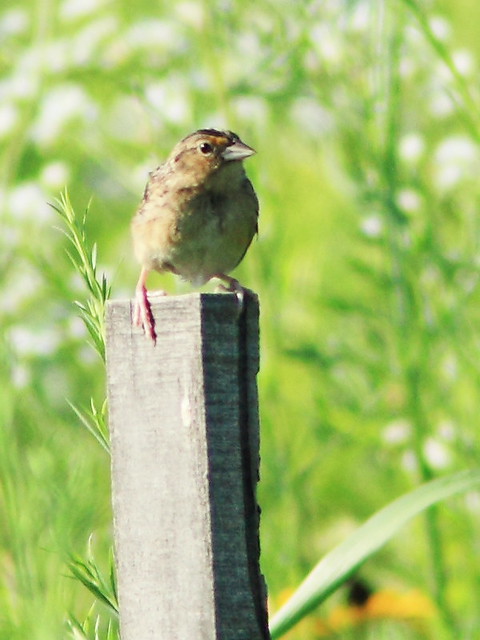
Sedge Wrens rattle their songs along the path:
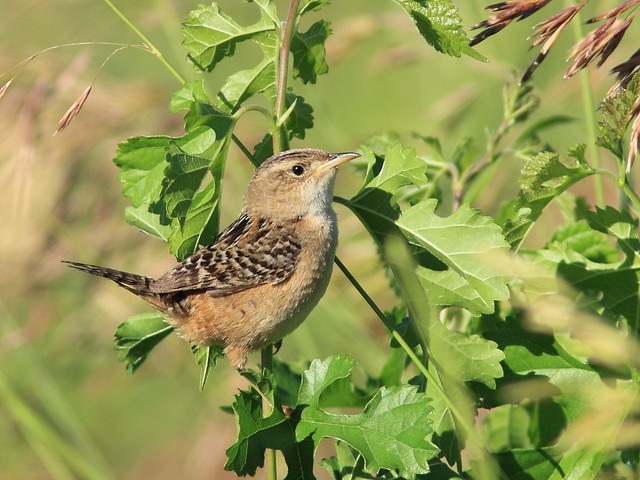
Bobolinks are still feeding their young. Their upside-down plumage pattern makes them favorite subjects as I try to obtain a perfect pose:
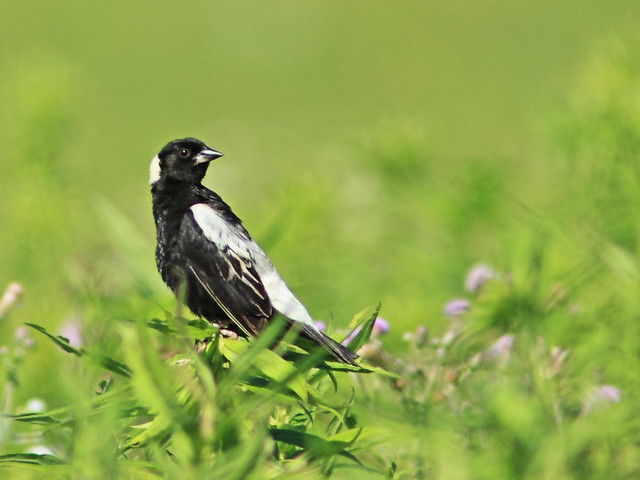
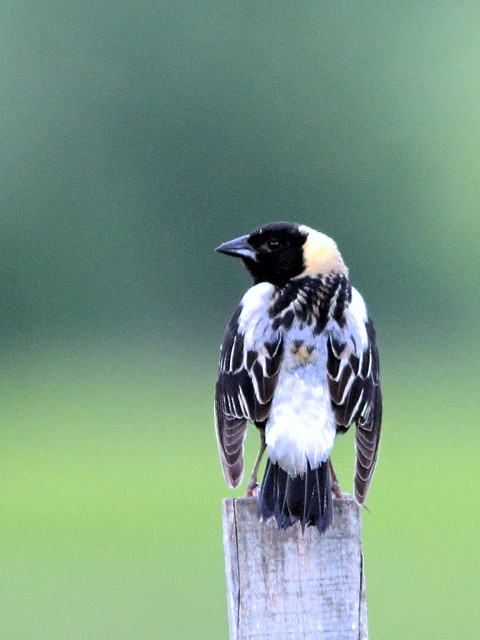
The demure female Bobolink is nonetheless beautiful:
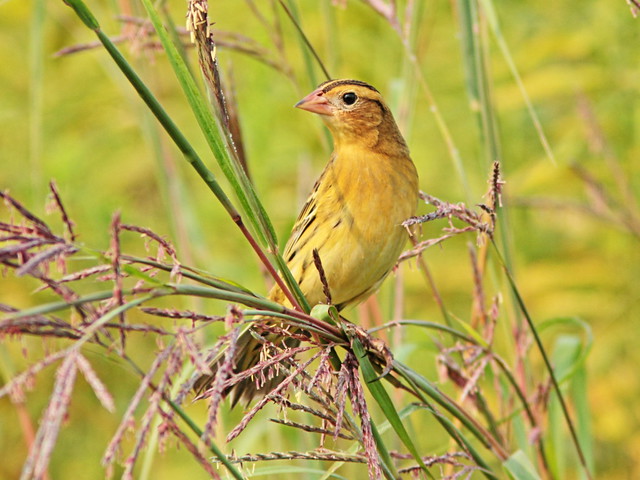
Colorful Dickcissels do not arrive in any great numbers until mid- to late June.
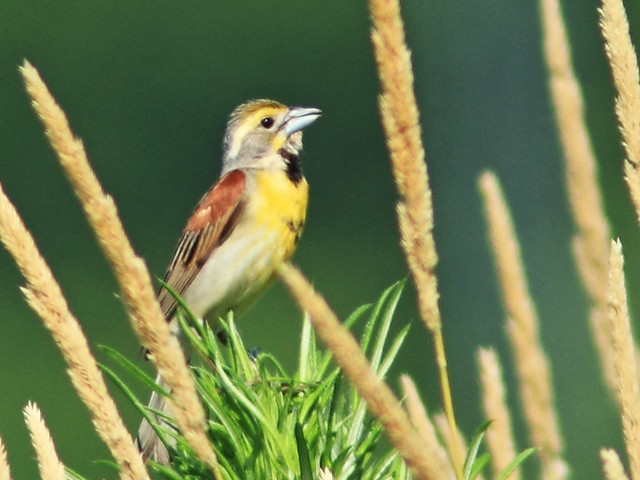
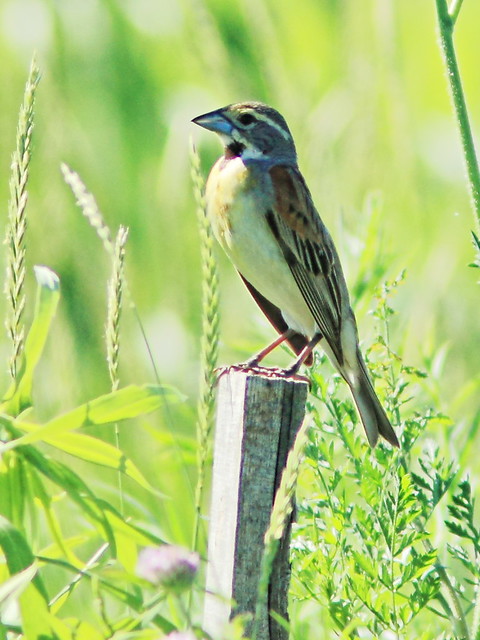
American Goldfinches wait for thistle and milkweed to produce the down for their nests and seeds for their vegetarian babies:
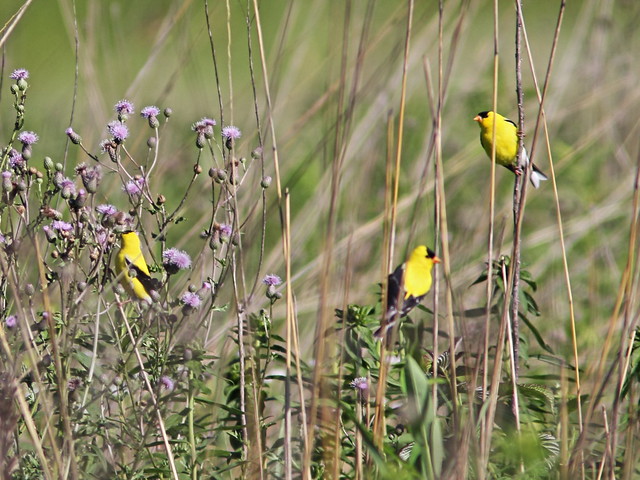
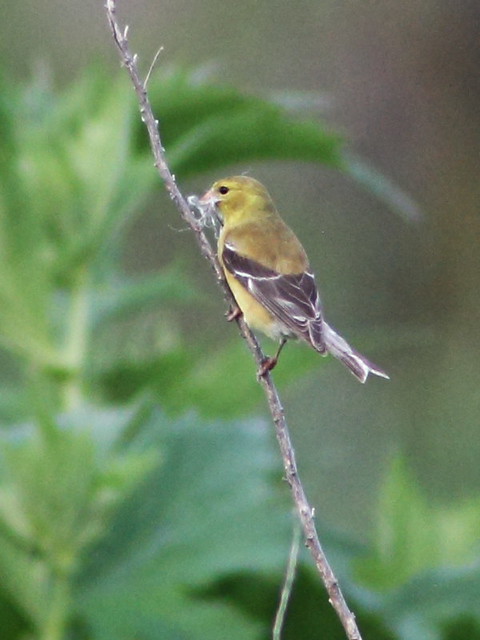
I catch the reflection of a goldfinch as it sips at a nearby creek:
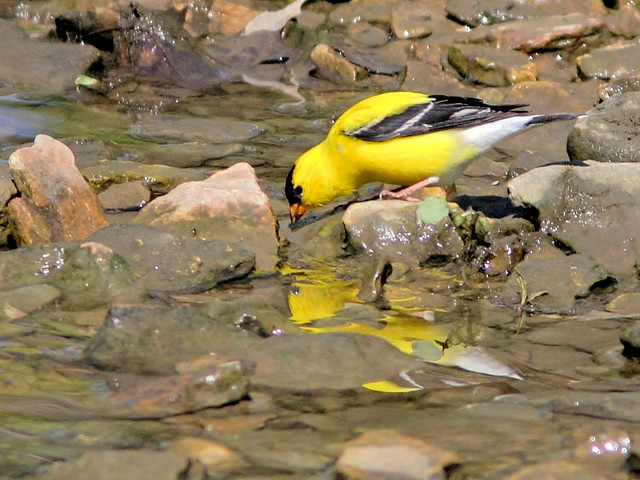
Red-winged Blackbirds defend their territories with song...
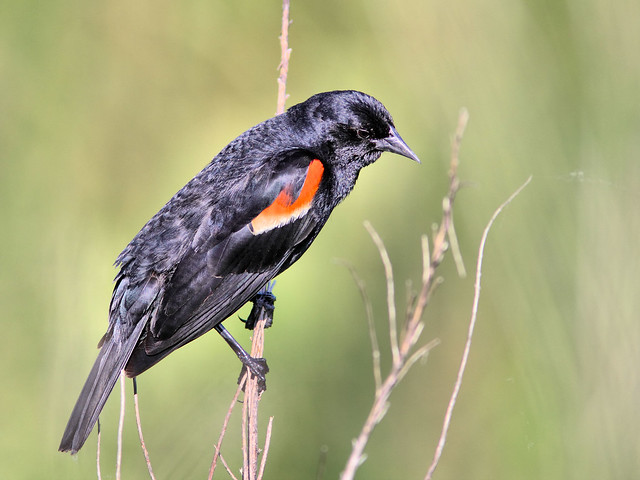
...and action, as one takes on a Red-tailed Hawk:
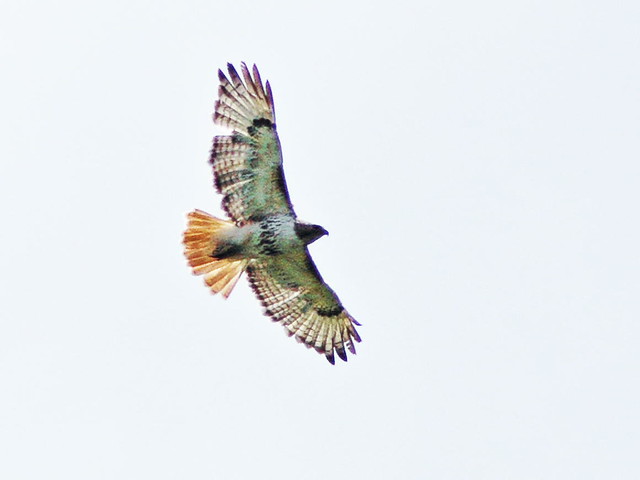
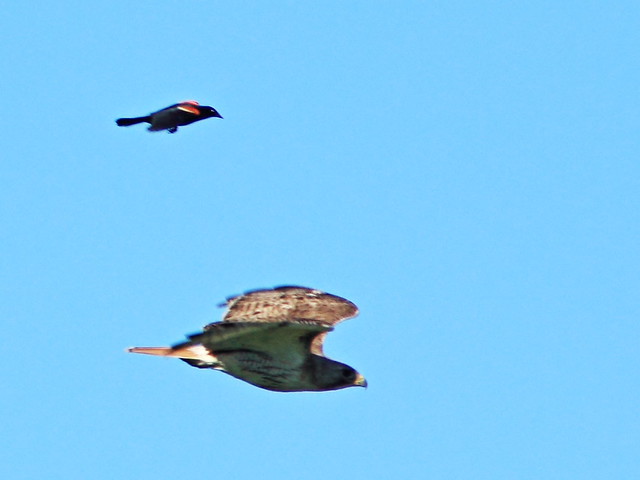
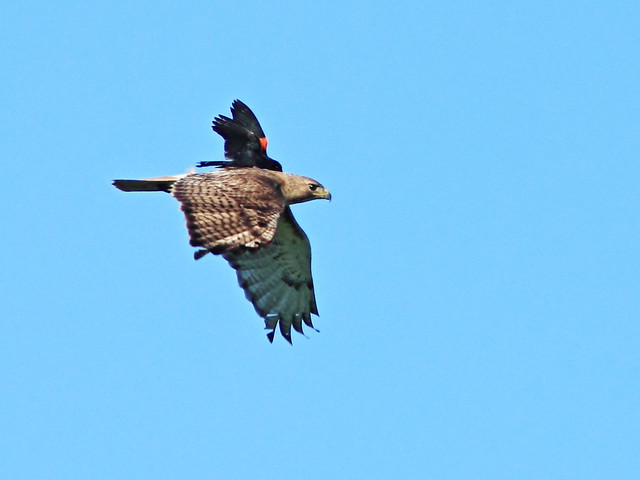
Spiderwort and Black-eyed Susan are common summer flowers in the prairie:
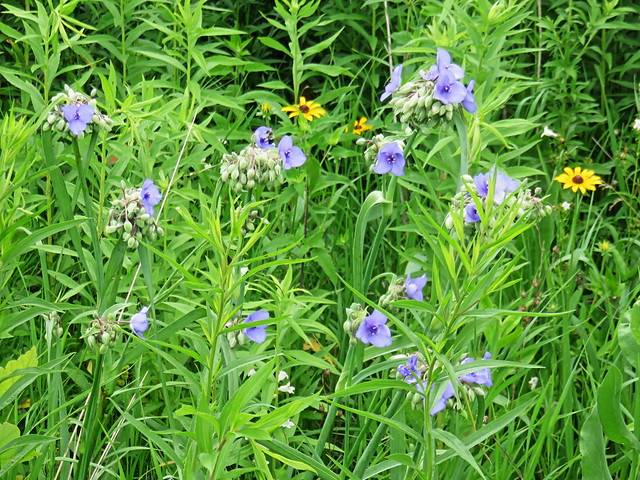
= = = = = = = = = = = = = = =
Linking to Misty's CAMERA CRITTERS,
Linking to Eileen's SATURDAY'S CRITTERS,
Linking to GOOD FENCES by Tex (Theresa).
Linking to SKYWATCH FRIDAY by Yogi, Sylvia and Sandy
Linking to WEEKEND REFLECTIONS by James
Linking to BirdD'Pot by Anni
Linking to Wild Bird Wednesday by Stewart
Linking to Today's Flowers Friday by Denise
Linking to Wordless Wednesday (on Tuesday) by NC Sue
________________________________________________
Please visit the links to all these memes to see some excellent photos on display
________________________________________________
On hot summer mornings we get out on the local wetlands well before sunrise, often to be rewarded by colorful skies and placid waters:
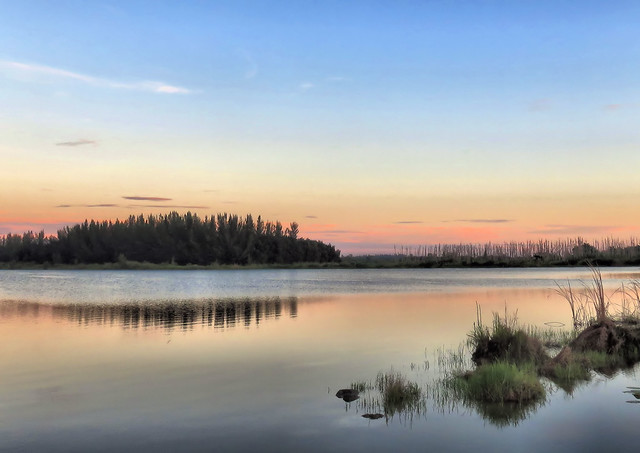
Before sunlight touched the ground, the top of a single thunderstorm over the Bahamas cast a long shadow which stretched westward across the Everglades in the opposite horizon:
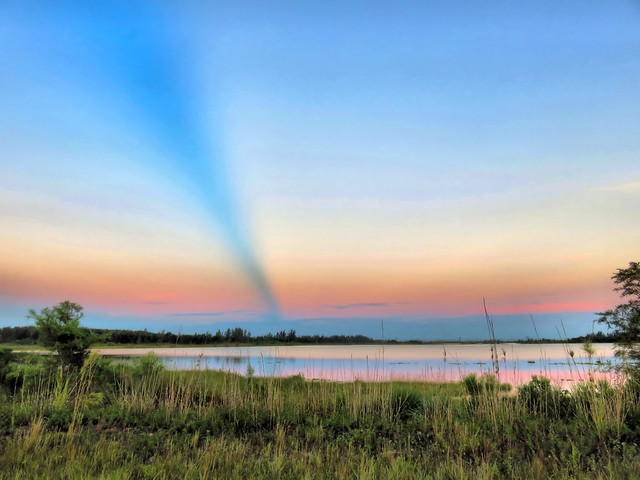
True, all egrets are indeed classified as herons, but all white herons are not egrets. I took this photo of two herons before sunrise, so it is not very sharp. Overlook the plumage difference and note the similarities between them. They are the same size and shape, their bills are blue-gray and tipped with black, and they have pale greenish legs. They are both Little Blue Herons:
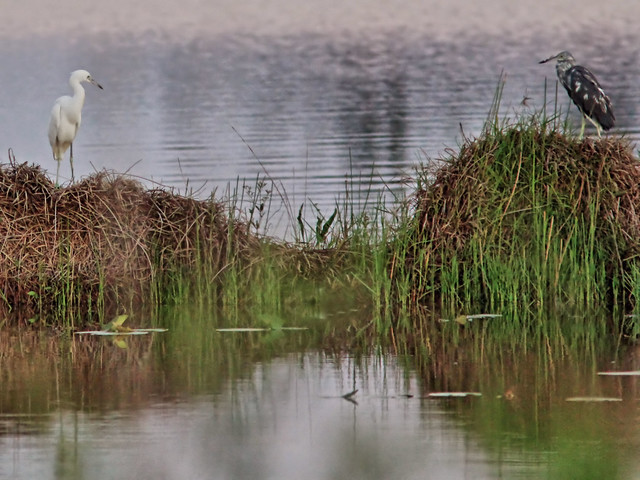
Immature white plumage is retained for about one year:
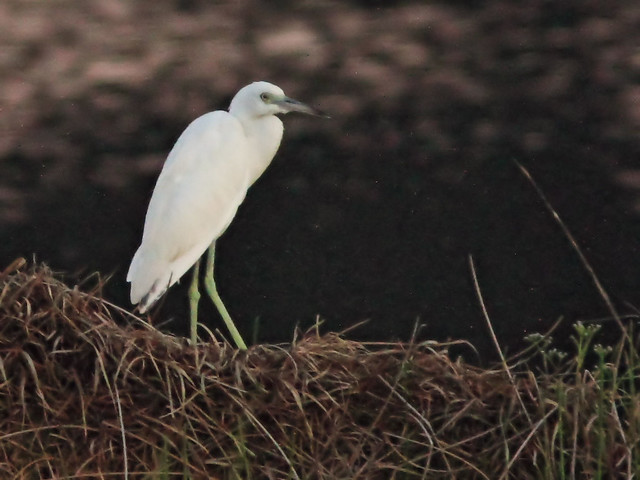
The other heron in the photo is this immature Little Blue Heron transitioning into adult plumage. At this stage they are sometimes called "Calico Herons:"
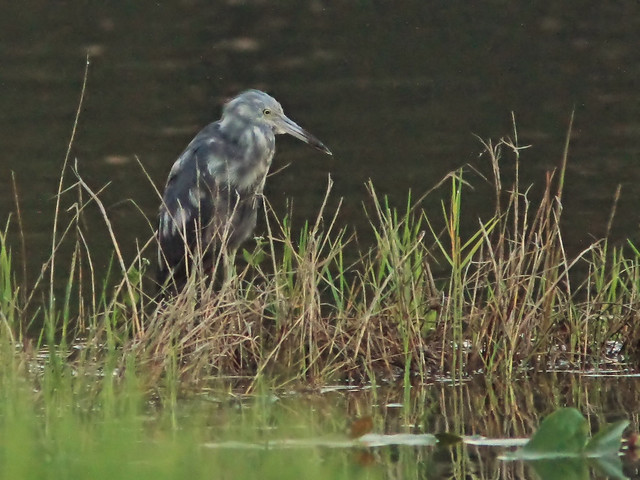
Here is a nice adult Little Blue Heron in our back yard:
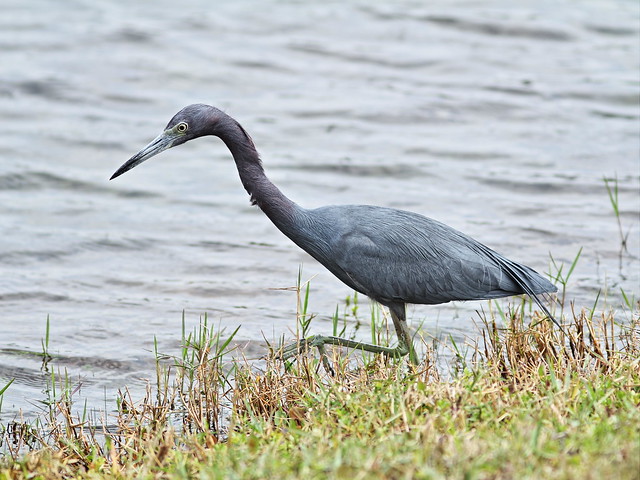
They are deliberate hunters, moving slowly and stalking their prey, often adopting this characteristic pose, identifiable from a great distance:
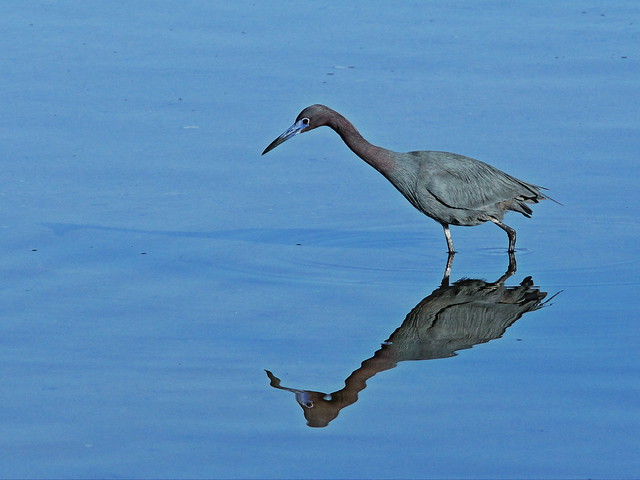
This Little Blue is dwarfed by a Great Egret:
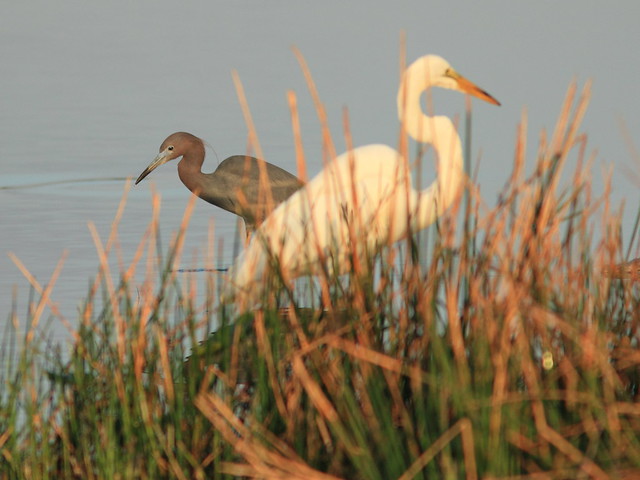
An immature Little Blue Heron casts a nice reflection against that of a neighbor's fence:
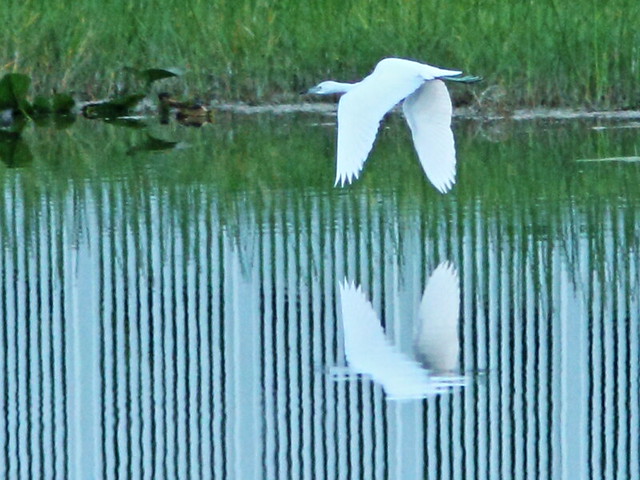
The plumage transition provides a variety of patterns. Early in the process there may only be a few dark feathers:
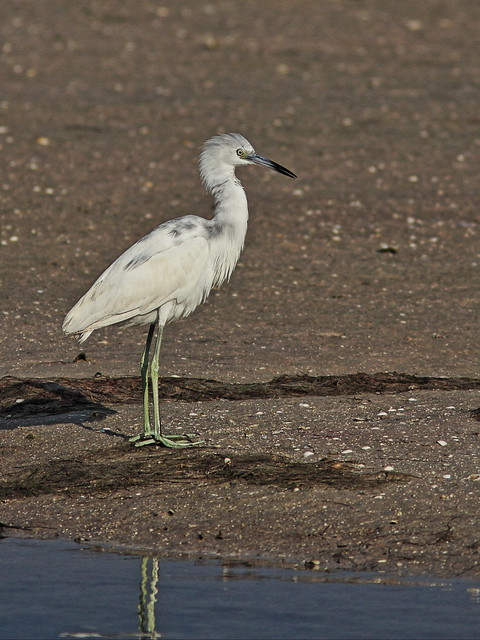
The white flight feathers are replaced by dark adult ones symmetrically, as illustrated in this Little Blue which is being pursued by a Boat-tailed Grackle:
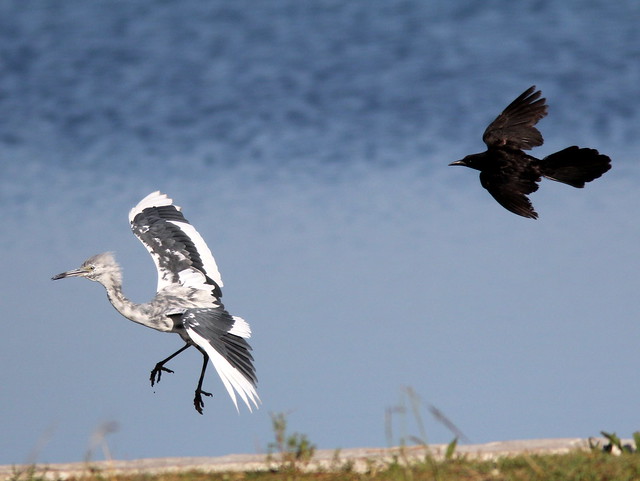
This past week I watched as a backyard immature Little Blue Heron caught a tiny fish (species not identified):
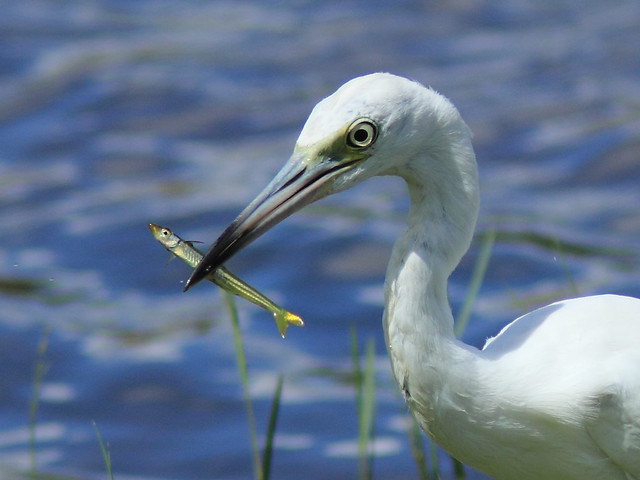
Immature Little Blue herons seem to be at the bottom of the heron pecking order. While herons of all species may vocalize or chase others that approach them too closely when they are hunting, the immature Little Blue Herons seem to be picked upon just for being in the vicinity of adults of the same species as well as Snowy and Great Egrets.
In this sequence, I first noticed two white herons on the far shore of the lake engaged in what appeared to be a hostile encounter, with much parrying and fluttering. It did not look like courtship or mating behavior. As I raised my camera, a Great Egret flew in and intervened. Both combatants were immature Little Blue Herons. One ended up mostly under water with the other standing straight up on top of its back, as seen in the first photo. Upon arrival of the egret, the warring parties took off in opposite directions:
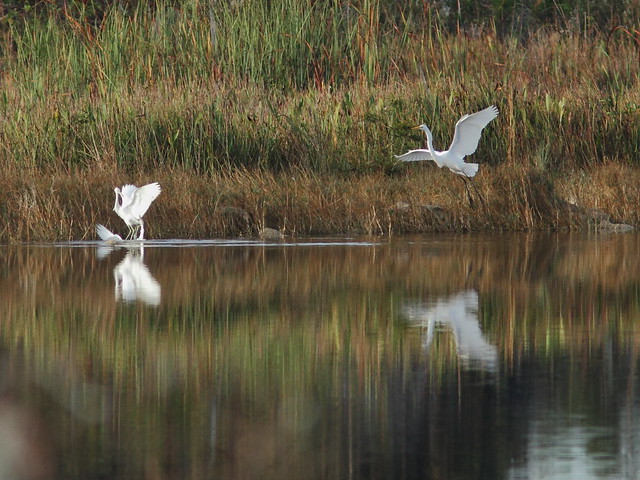
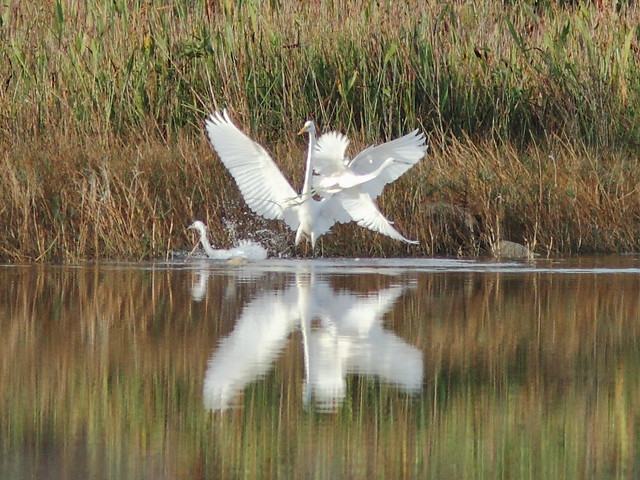
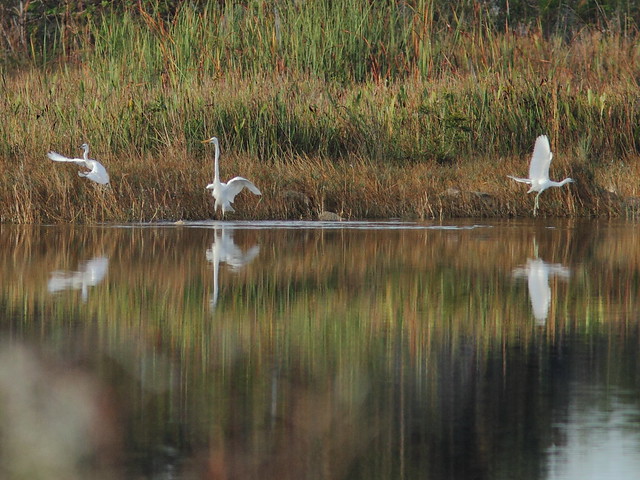
The Snowy Egret is about the same size as the Little Blue, but has a black bill with yellow at its base and black legs with "golden slippers." Here one chases an immature Little Blue Heron:
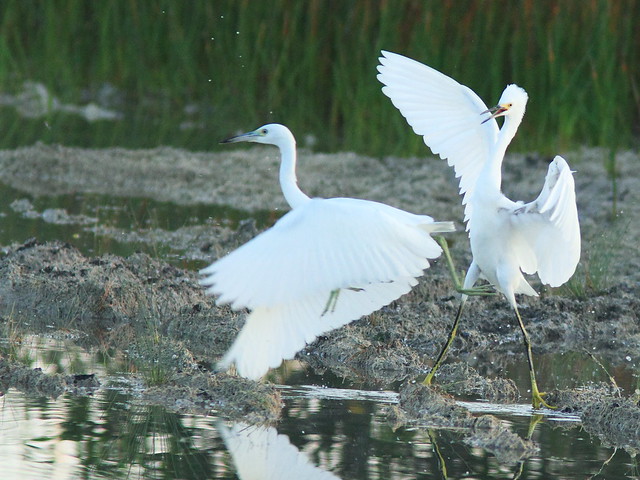
It is important to note the leg color of the following two white herons. The Great Egret has black legs:
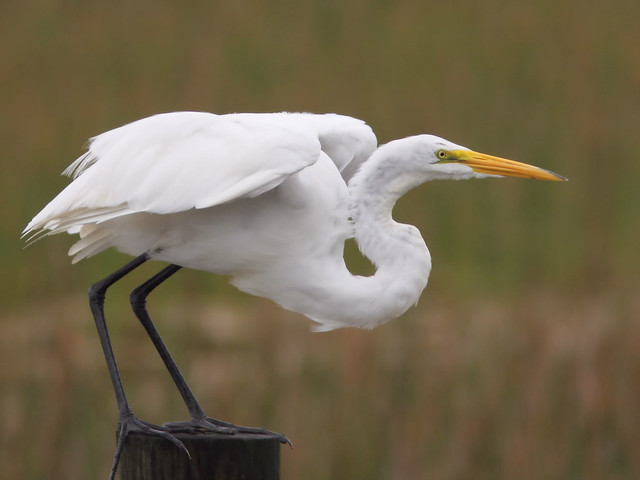
This is not an egret, but a Great Blue Heron white morph ("Great White Heron") in our back yard. Its legs are pale:
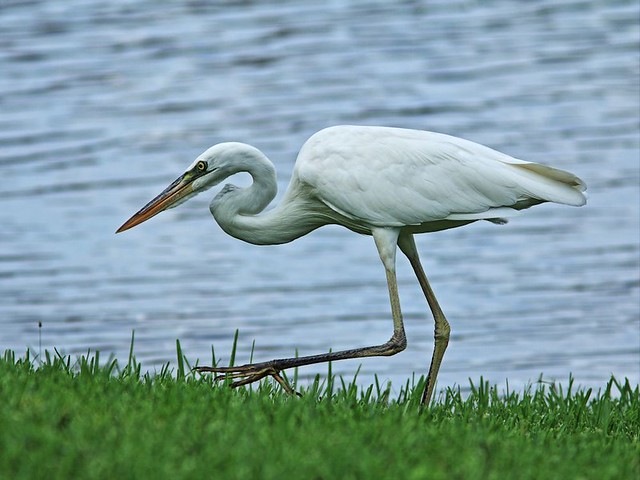
The Great White Heron is also much larger than the Great Egret:
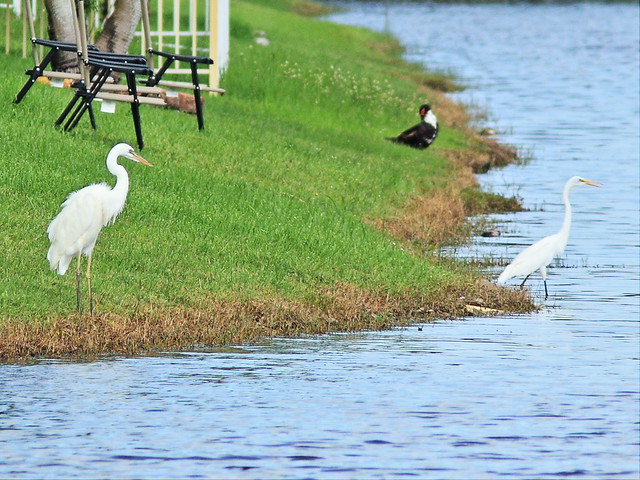
We do not venture out into the wetlands when rain threatens. One morning we visited nearby Chapel Trail Nature Preserve and walked the boardwalk with the car parked comfortably nearby.
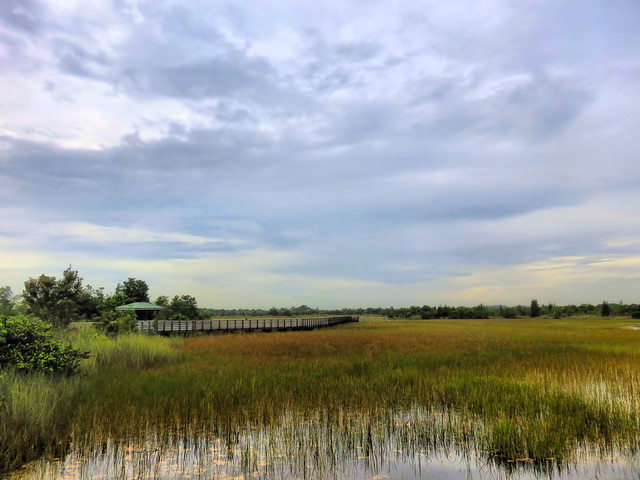
Swamp Lilies bloomed:
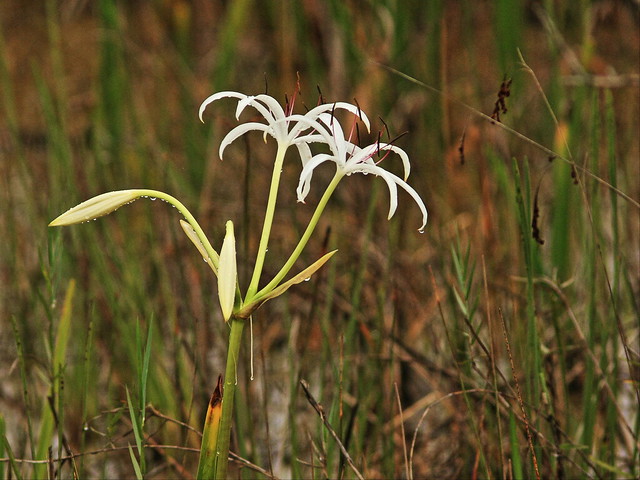
A young Marsh Rabbit nibbled on grass near the parking lot. This small dark cottontail rabbit without any white on its tail is a strong swimmer:
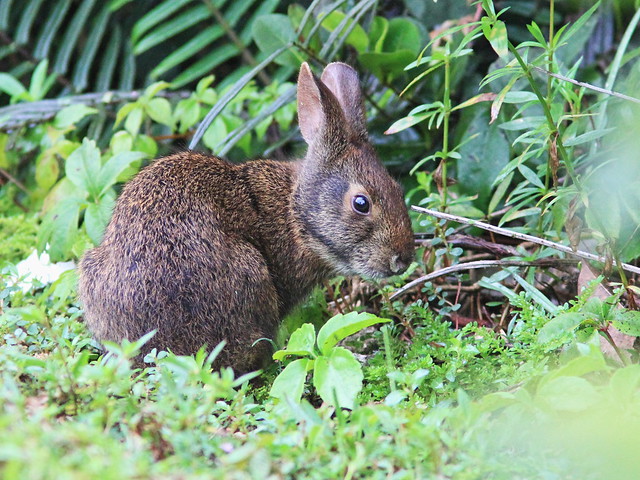
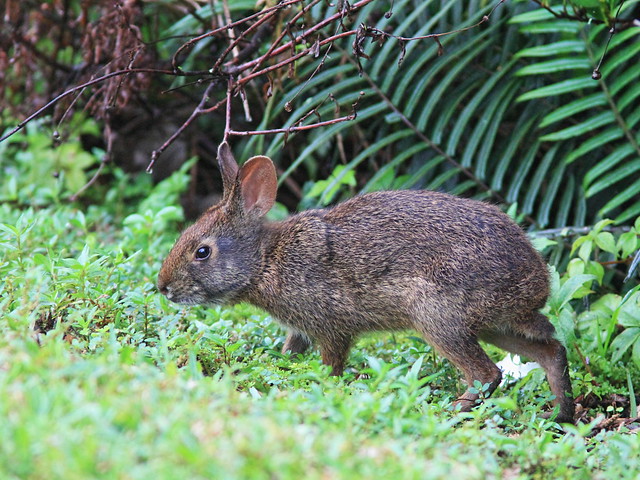
= = = = = = = = = = = = = = =
Linking to Misty's CAMERA CRITTERS,
Linking to Eileen's SATURDAY'S CRITTERS,
Linking to GOOD FENCES by Tex (Theresa).
Linking to SKYWATCH FRIDAY by Yogi, Sylvia and Sandy
Linking to WEEKEND REFLECTIONS by James
Linking to BirdD'Pot by Anni
Linking to Wild Bird Wednesday by Stewart
Linking to Today's Flowers Friday by Denise
Linking to Wordless Wednesday (on Tuesday) by NC Sue
________________________________________________
Please visit the links to all these memes to see some excellent photos on display
________________________________________________
For the past couple of weeks south Florida has deviated from the customary pattern of afternoon showers and thunderstorms. To escape the worst of the punishing solar radiation, we often enter the gate to the wetlands while it is still dark:
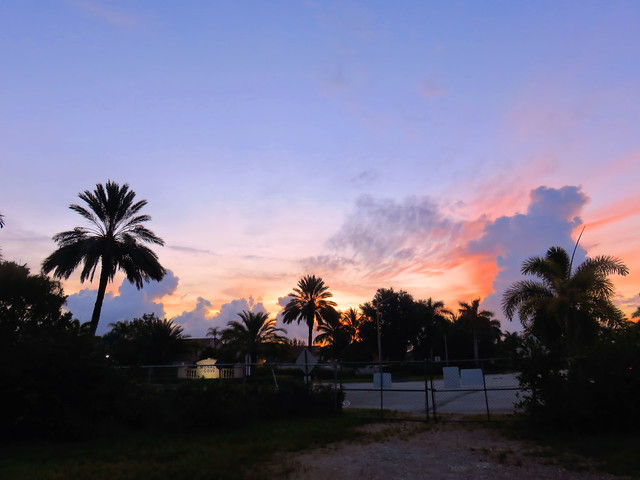
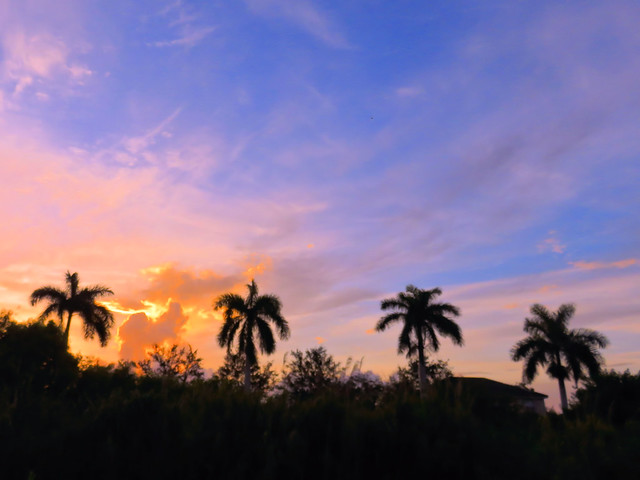
There have been unusually high temperatures and humidity, and rain clouds regularly pop up overnight and in the morning hours. This was the view over the local wetlands just after sunrise:
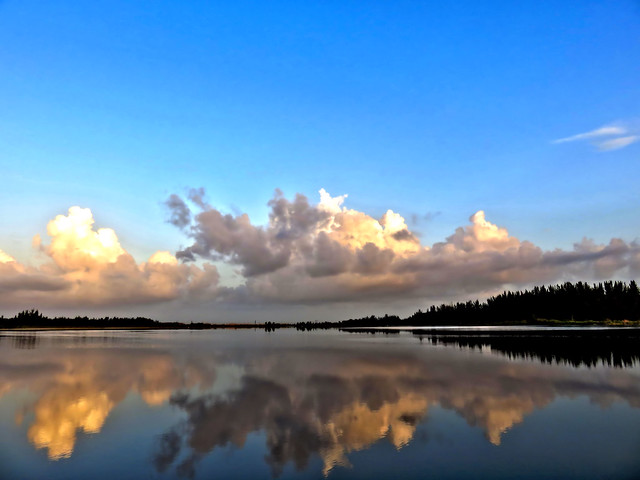
Native Firebush flourishes in this climate, attracting butterflies and (in winter) hummingbirds. An ant seeks its nectar:
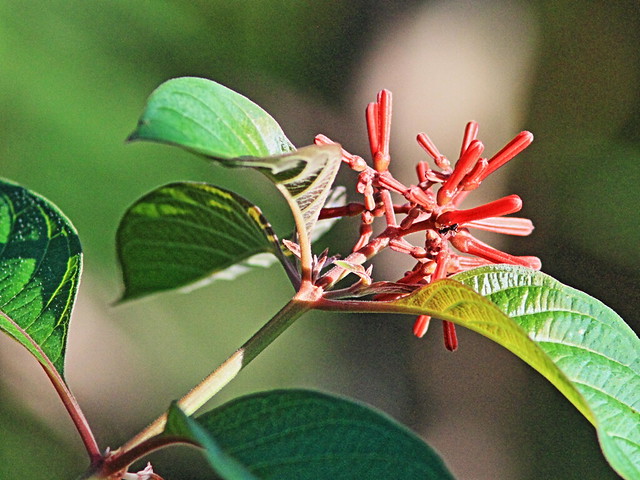
Water levels in the lake are rather high, discouraging long-legged waders. An immature Little Blue Heron transitioning from its all-white first year plumage into the dark adult plumage was often the only wader in sight:
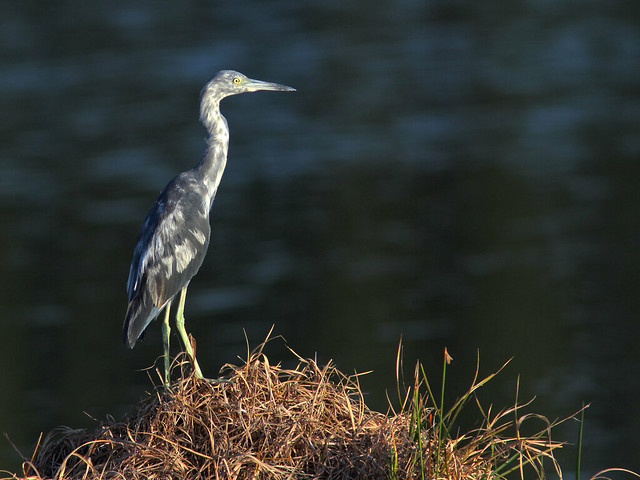
Killdeer have finished breeding but occasionally forage along the lake:
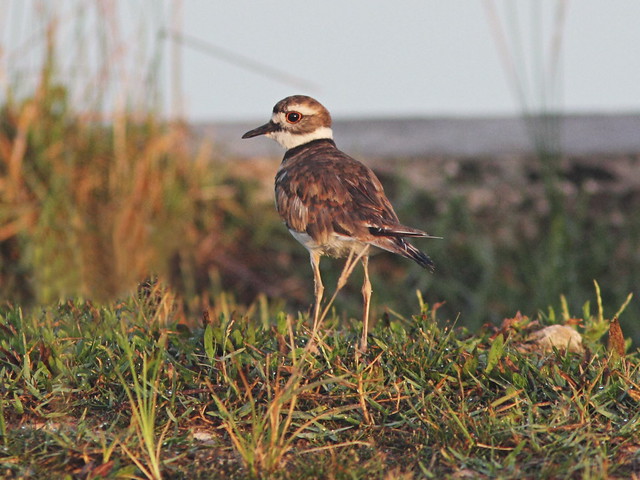
One morning we were pleased to find two Least Sandpipers moving along with a Kildeer (out of focus in the background, to show size disparity):
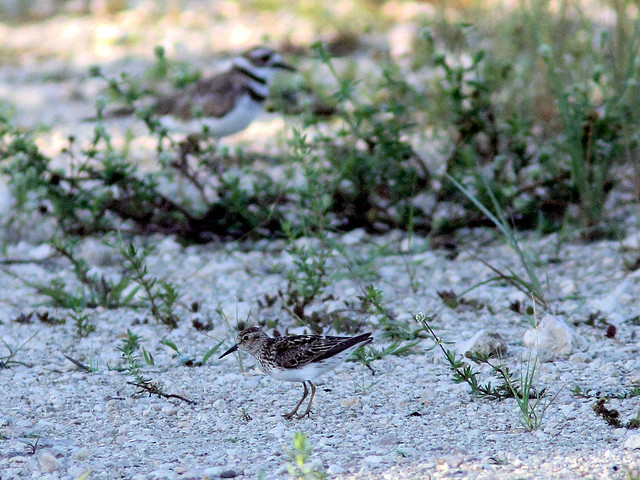
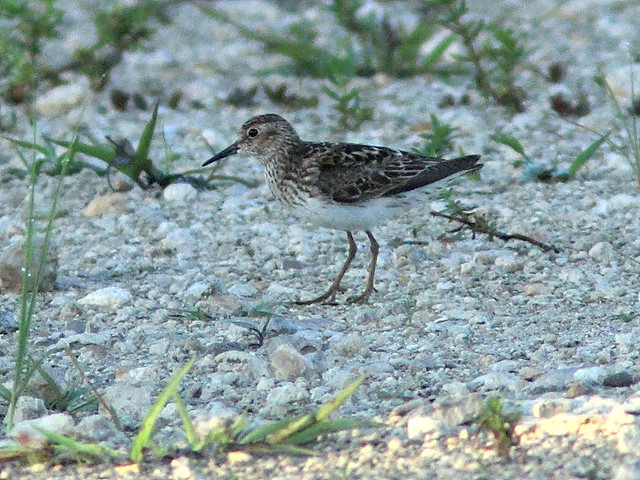
Several mornings just around sunrise two Bald Eagles, an adult and a juvenile, passed overhead from the direction of the nest in Pembroke Pines, about 1 1/2 miles to the NW. The very dark young bird is almost surely the lone eaglet which fledged from the second brood after the first brood and its own nest-mate were lost:
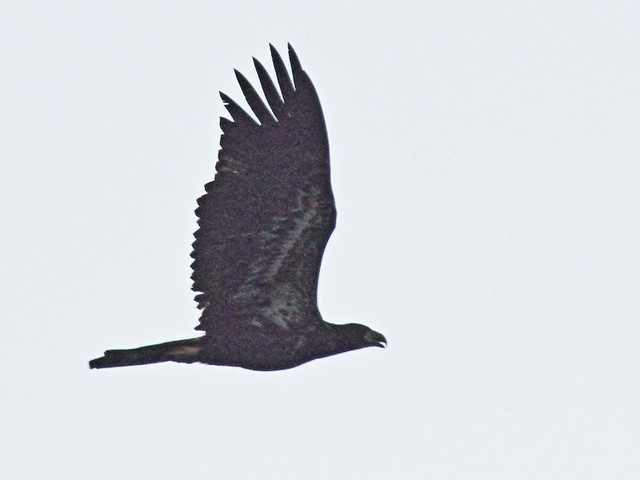
Once, the adult deviated to make a pass over the lake. It splashed down but failed to catch a fish:
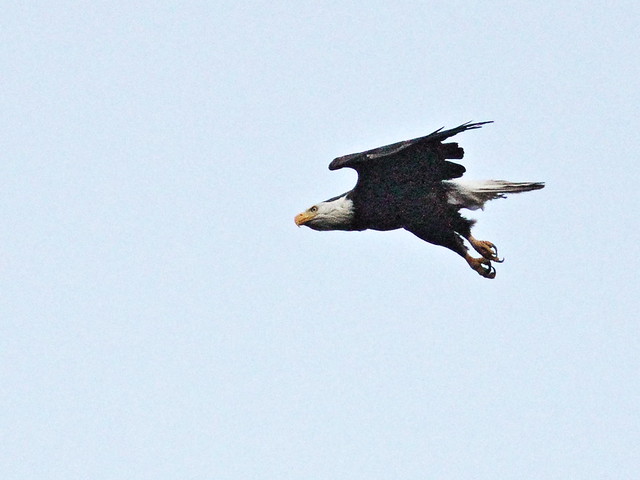
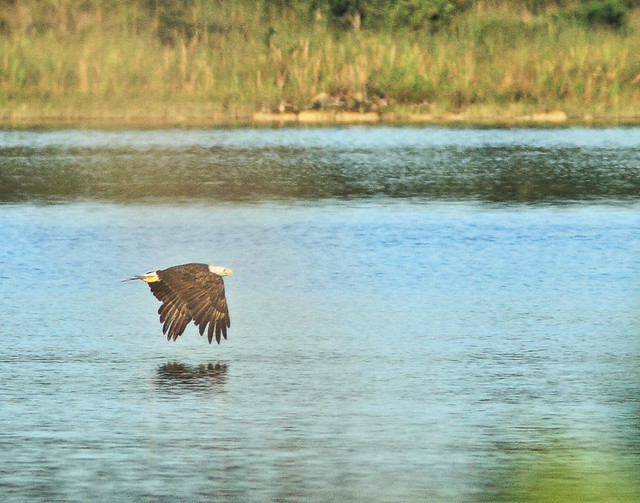
Another morning a Great Blue Heron flew in and then struck an unusual pose. I call it the "Trench Coat Flasher" posture, which probably serves the purpose of drying its feathers or assists in thermoregulation::
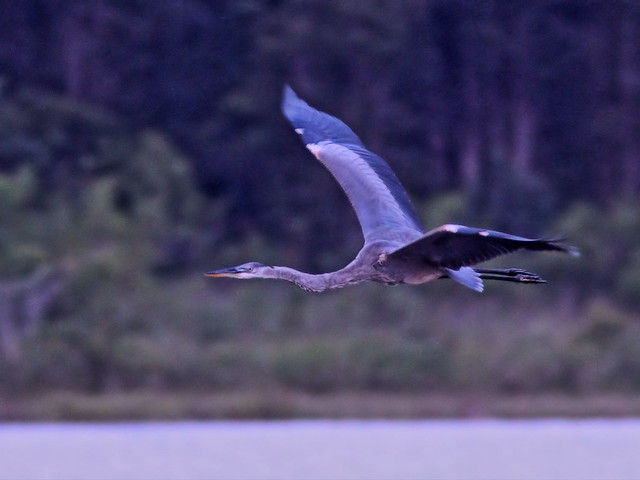
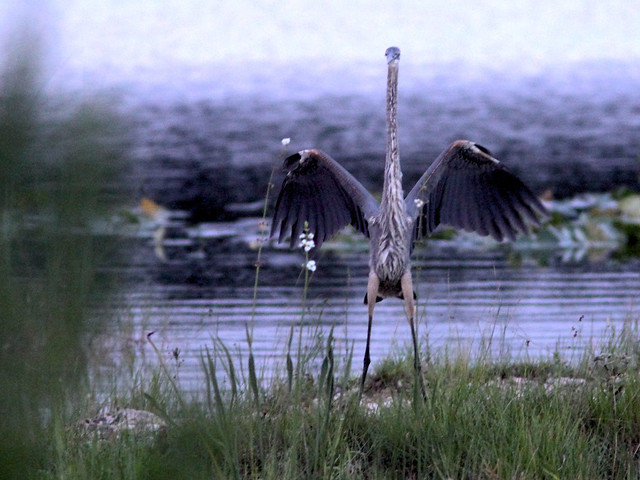
Back home another (or possibly the same) Great Blue Heron was loafing in our back lawn most ot the day. When I went out on the patio to start roasting a chicken on the grill, the heron strolled away but soon returned, allowing me to take its picture:
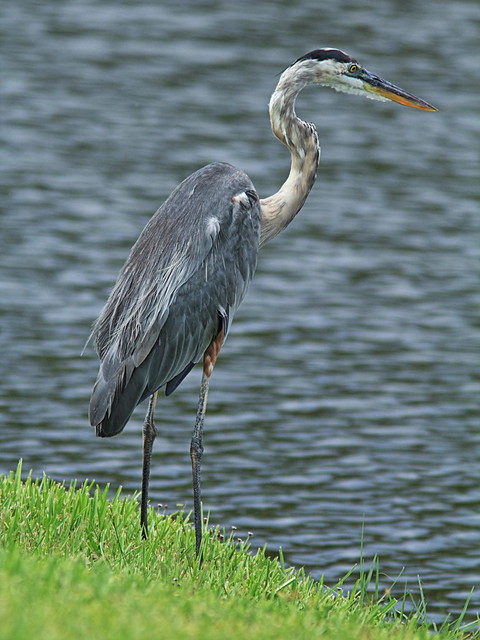
Later in the evening, Mary Lou noticed it was subduing a large fish:
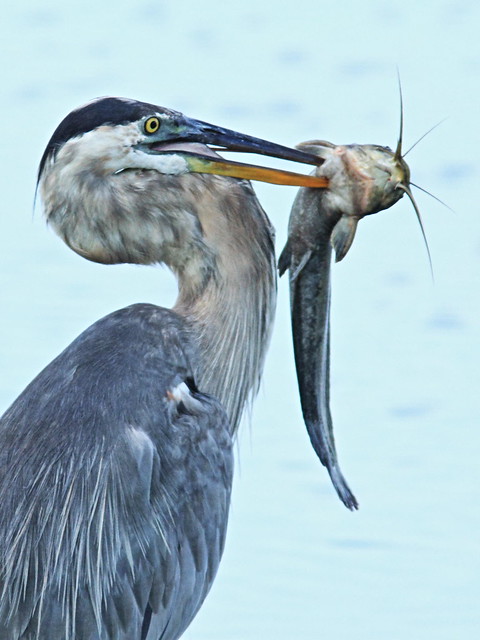
I got my camera and watched the heron from inside the house as it walked from left to right, directly past our patio.
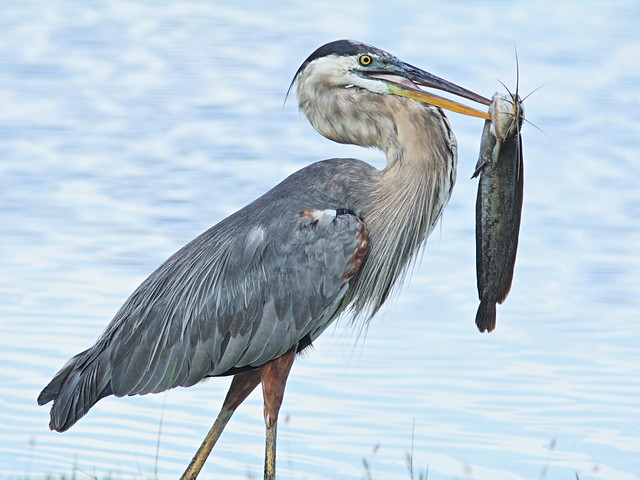
I recognized the fish as a catfish. Its four pairs of feelers and eel-like elongated dorsal and anal fins identified it as an exotic Walking Catfish (Clarias batrachus). Not wanting to disturb the bird, I continued to shoot through the windows. It finally stopped and swallowed the fish. Unfortunately, this took place behind our clump of Lemongrass, so I had difficulty focusing manually:
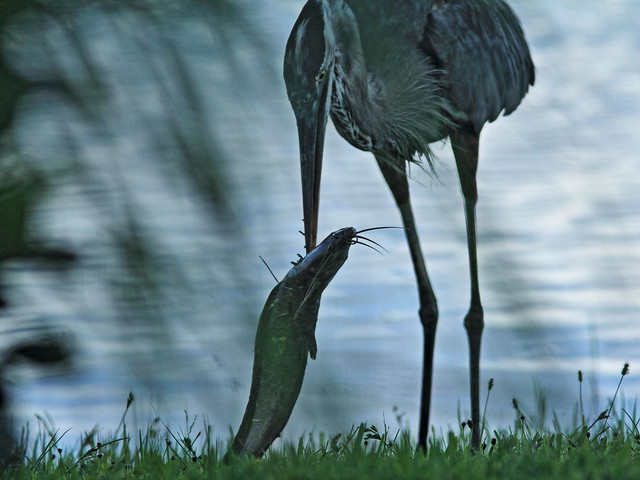
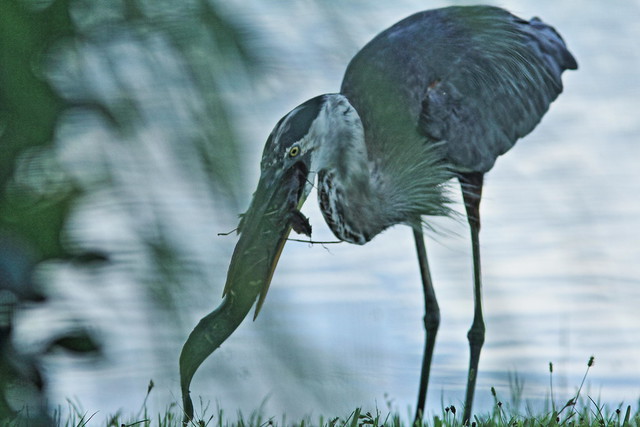
After it had eaten the fish, the heron drank water and then continued resting quite motionless at the edge of the lake, remaining there until well after dark.
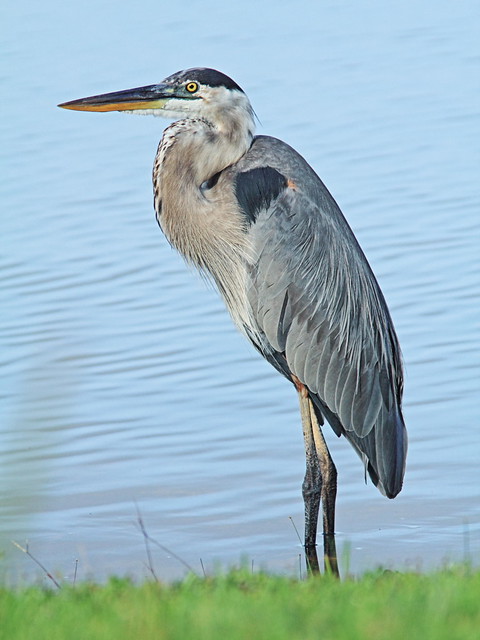
Read more about the Walking Catfish AT THIS LINK
"Walking catfish possess a large accessory breathing organ which enables them to breath atmospheric oxygen. They are well known for their ability to "walk" on land for long distances, especially during or after rainfall...
"In the early 1960's, the walking catfish was imported to Florida from Thailand for the aquarium trade. The first introductions apparently happened in the mid 60's when adult fish, imported to be brood stock, escaped from Penagra Aquarium in Broward County and/or from a truck transporting brood fish between Dade and Broward counties.
"In 1967, the state of Florida banned the importation and possession of walking catfish. However, this led to another release of the fish into the wild. Fish farmers in Tampa Bay who possessed the fish purposefully released them so that they would not be found in violation of the new law.
"In 1968, this species was only found in three south Florida counties. However, by 1978, the walking catfish had spread to 20 counties in the southern half of the peninsula. The fish accomplished this migration by using the many hundreds of miles of interconnected canals across south Florida and by moving over land, typically during rainy nights. By the mid 1970's, the walking catfish was established in Everglades National Park and in Big Cypress National Preserve..."
= = = = = = = = = = = = = = =
Linking to Misty's CAMERA CRITTERS,
Linking to Eileen's SATURDAY'S CRITTERS,
Linking to GOOD FENCES by Tex (Theresa).
Linking to SKYWATCH FRIDAY by Yogi, Sylvia and Sandy
Linking to WEEKEND REFLECTIONS by James
Linking to BirdD'Pot by Anni
Linking to Wild Bird Wednesday by Stewart
Linking to Today's Flowers Friday by Denise
Linking to Wordless Wednesday (on Tuesday) by NC Sue
________________________________________________
Please visit the links to all these memes to see some excellent photos on display
________________________________________________


































































